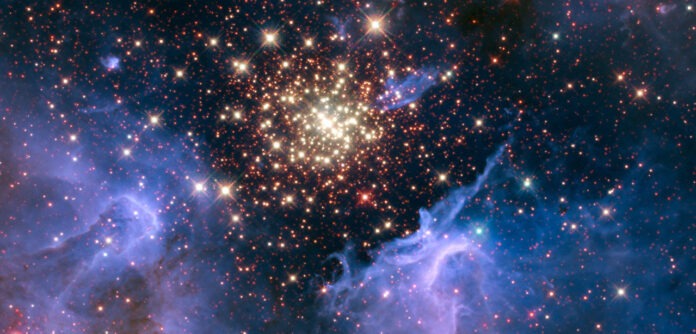Location: In the Carina spiral arm of our Milky Way Galaxy
Distance from Earth: About 20,000 light-years
Object type: Nebula and open star cluster
Discovered by: Sir John Herschel in 1834
Imaged here by the Hubble Space Telescope, NGC 3603 is a collection of thousands of large, hot stars, including some of the most massive stars known to us. Scientists categorize it as an “open cluster” because of its spread-out shape and low density of stars. Surrounding the bright star cluster are plumes of interstellar gas and dust, which comprise the nebula part of this cosmic object. New stars are formed from the gaseous material within these clouds! NGC 3603 holds stars at a variety of life stages, making it a laboratory for scientists to study star evolution and formation. Astronomers estimate that star formation in and around the cluster has been occurring for 10 to 20 million years.
Read more information about NGC 3603 here.
Right now, the Hubble Space Telescope is delving into its #StarrySights campaign! Find more star cluster content and breathtaking new images by following along on Hubble’s Twitter, Facebook, and Instagram.
Make sure to follow us on Tumblr for your regular dose of space!
